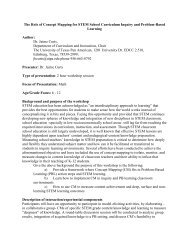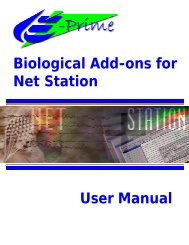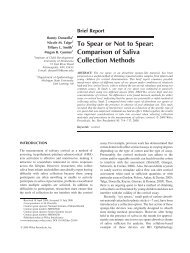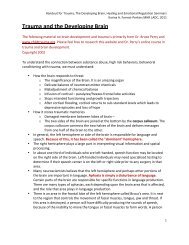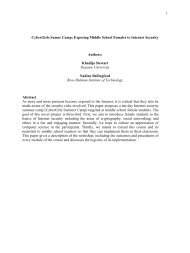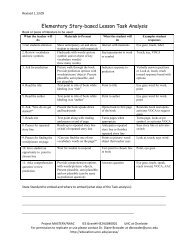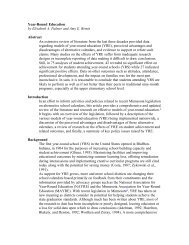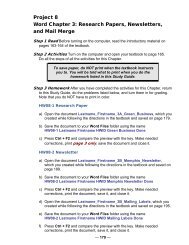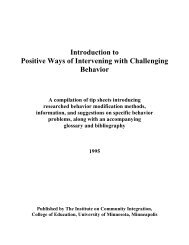Net Station Waveform Tools - College of Education & Human ...
Net Station Waveform Tools - College of Education & Human ...
Net Station Waveform Tools - College of Education & Human ...
Create successful ePaper yourself
Turn your PDF publications into a flip-book with our unique Google optimized e-Paper software.
21: Wavelet<br />
In wavelet transformation, a wavelet can be considered similar to a frequencyselective<br />
“window” that is convolved (shifted) along a signal in the time domain to<br />
determine the degree to which the frequency content <strong>of</strong> the signal corresponds to that<br />
<strong>of</strong> the wavelet.<br />
The convolution reveals the magnitude <strong>of</strong> the correspondence, which is represented<br />
by the wavelet coefficient. Magnitude is indicated by units <strong>of</strong> power (which is<br />
amplitude squared). A high wavelet coefficient indicates a high correspondence<br />
between the frequencies measured by the wavelet and the frequencies contained in a<br />
localized section <strong>of</strong> the signal. A low coefficient indicates a low correspondence.<br />
(The wavelet coefficient also provides information about phase stability, which<br />
indicates whether activity is correlated across trials; this is described further in<br />
Chapter 12, “Wavelet Display,” in the <strong>Net</strong> <strong>Station</strong> Viewer Technical Manual.)<br />
Compressing or dilating the wavelet in time creates other members <strong>of</strong> the wavelet<br />
family, enabling you to adjust the frequency selectivity <strong>of</strong> the wavelet. Compressed<br />
wavelets measure higher frequencies; dilated wavelets measure lower frequencies.<br />
Each member <strong>of</strong> the wavelet family is convolved with the EEG signal in the time<br />
domain to determine the presence <strong>of</strong> other frequency ranges.<br />
Note: In the frequency domain, a wavelet is in effect a bandpass filter, and a series <strong>of</strong><br />
wavelets is similar to a filter bank.<br />
In essence, we are filtering different frequency bands, cutting these bands into slices<br />
in time, and analyzing their energy content. The result is a signal whose frequency<br />
content is localized in time by the values <strong>of</strong> its wavelet coefficients; the wavelet<br />
coefficients for each position and frequency <strong>of</strong> the scaled wavelets can be plotted on<br />
a graph. <strong>Net</strong> <strong>Station</strong> displays this information in the Wavelet Display (see the<br />
<strong>Net</strong> <strong>Station</strong> Viewer Technical Manual).<br />
Resources for newcomers to wavelets include:<br />
• Graps, A. (1995–2004). Amara’s wavelet page. Retrieved from http://<br />
www.amara.com/current/wavelet.html<br />
• Herrmann, C.S., Grigutsch, M., & Busch, N.A. (2005). EEG oscillations and<br />
wavelet analysis. In T.C. Handy (Ed.), Event-related potentials: A methods<br />
handbook (pp.229–259). Cambridge: MIT Press.<br />
• Valens, C. (1999). A really friendly guide to wavelets. Retrieved from http://<br />
perso.wanadoo.fr/polyvalens/clemens/wavelets/wavelets.html<br />
192 <strong>Net</strong> <strong>Station</strong> <strong>Waveform</strong> <strong>Tools</strong> Technical Manual S-MAN-200-WFTR-001 • December 21, 2006




